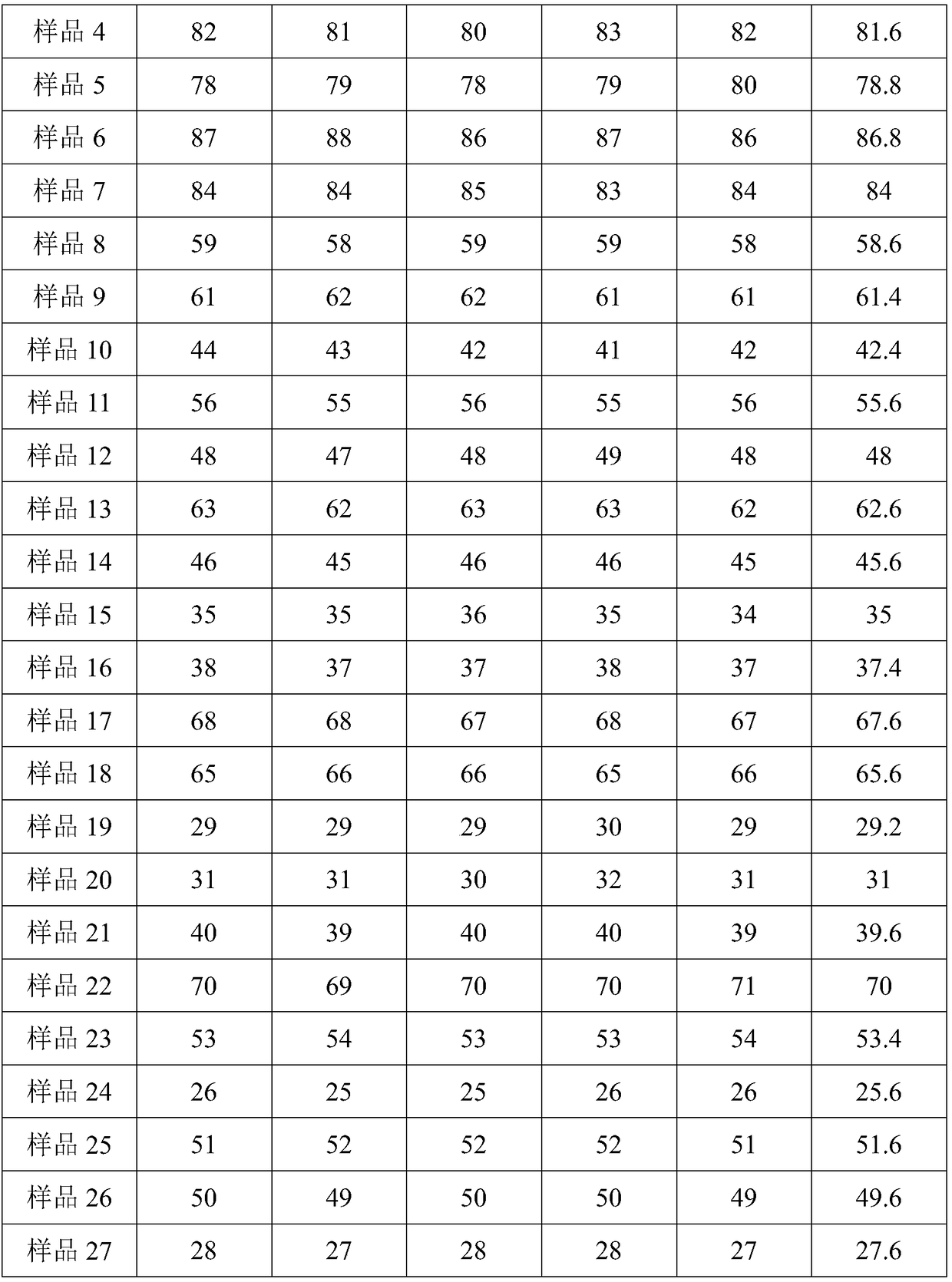Low-temperature solder alloy powder and preparation method thereof
A solder alloy and low-temperature solder technology, applied in the field of alloys, can solve the problems of brittleness due to atmospheric oxidation, poor corrosion resistance, and high welding temperature, so as to improve brittleness, enhance strength and corrosion resistance, and enhance wettability and resistance. The effect of impact performance
- Summary
- Abstract
- Description
- Claims
- Application Information
AI Technical Summary
Problems solved by technology
Method used
Image
Examples
preparation example Construction
[0049] In some embodiments, the preparation method of the low-temperature solder alloy powder includes the following steps:
[0050] S1: Add Sn and Ag to a vacuum frequency induction melting furnace, heat up to 700-900°C, melt and magnetically stir until uniform, stand still, and air-cool to obtain a Sn-Ag master alloy;
[0051] S2: Add Sn and P into the vacuum frequency induction melting furnace, wait for the molten pool to form in the crucible, fill the furnace with inert gas, raise the temperature to 360-400°C, add P into the molten pool from the hopper, and wait for the tin-phosphorus alloy liquid After alloying, magnetically stir until uniform, stand still, and air-cool to obtain a Sn-P master alloy;
[0052] S3: Add Sn, Cu and RE into a vacuum frequency induction melting furnace, heat up to 500-800°C, melt and magnetically stir until uniform, stand still, and air-cool to obtain a Sn-Cu-RE master alloy;
[0053] S4: Add Sn, Co and Pd into a vacuum frequency induction mel...
Embodiment 1
[0072] The first aspect of Example 1 provides a low-temperature solder alloy powder, which comprises the following components in terms of weight percentage: Ag 3.25%, P 0.45%, RE 0.55%, Co 1.25%, Pd 2.5%, Bi 50%, Mg 0.1%, Al 0.1%, Cu 0.95%, Zr 0.65%, In 0.35%, and the rest is Sn. Among them, the RE component is a combination of Ga and Ce at a ratio of 1:1. The average particle size of the solder alloy is 35 microns.
[0073] The second aspect of embodiment 1 provides a kind of preparation method of low-temperature solder alloy powder, comprises the following steps:
[0074] S1: Add Sn and Ag into a vacuum frequency induction melting furnace, heat up to 780°C, melt and magnetically stir until uniform, stand still, and air-cool to obtain a Sn-Ag master alloy;
[0075] S2: Add Sn and P into the vacuum frequency induction melting furnace, wait for the molten pool to form in the crucible, fill the furnace with inert gas, raise the temperature to 380°C, add P into the molten pool ...
Embodiment 2
[0081] The first aspect of Example 2 provides a low-temperature solder alloy powder, which comprises the following components in terms of weight percentage: Ag 3%, P 0.02%, RE 40%, Co 1%, Pd 2%, Bi 40%, Mg 0.05%, Al 0.05%, Cu 0.8%, Zr 0.5%, In 0.3%, and the rest is Sn. Among them, the RE component is a combination of Ga and Ce at a ratio of 1:1. The average particle size of the solder alloy is 35 microns.
[0082] The second aspect of embodiment 2 provides a preparation method of low-temperature solder alloy powder, and the specific preparation method is the same as that of embodiment 1.
PUM
| Property | Measurement | Unit |
|---|---|---|
| particle size | aaaaa | aaaaa |
| particle size | aaaaa | aaaaa |
| particle size | aaaaa | aaaaa |
Abstract
Description
Claims
Application Information
 Login to View More
Login to View More - R&D
- Intellectual Property
- Life Sciences
- Materials
- Tech Scout
- Unparalleled Data Quality
- Higher Quality Content
- 60% Fewer Hallucinations
Browse by: Latest US Patents, China's latest patents, Technical Efficacy Thesaurus, Application Domain, Technology Topic, Popular Technical Reports.
© 2025 PatSnap. All rights reserved.Legal|Privacy policy|Modern Slavery Act Transparency Statement|Sitemap|About US| Contact US: help@patsnap.com



